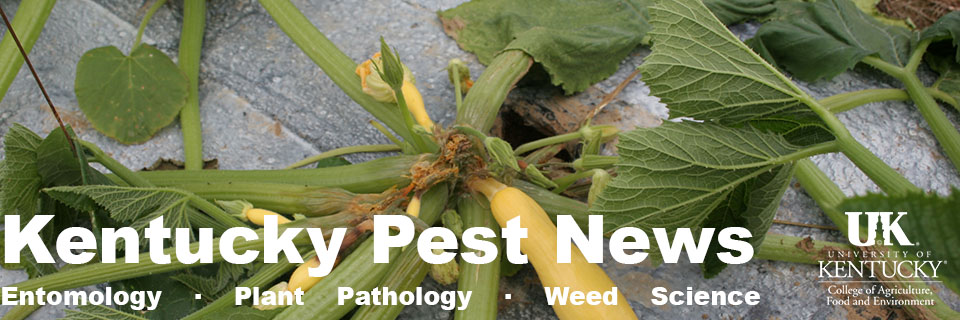Orange rust of brambles can be a concern for Kentucky blackberry and raspberry growers. The first symptoms are often noticed in early spring when newly formed shoots appear weak and spindly. Once plants become infected, the pathogen spreads throughout the entire plant. While orange rust is unlikely to kill brambles, it significantly reduces vigor and results in lower yields. Infected plants should be removed to reduce disease spread.

Orange Rust of Brambles Facts
- New shoots emerge with poor growth in early spring. Leaves may yellow and distort. Orange pustules develop on the undersides of leaves, eventually covering surfaces (Figure 1). Infected leaves often drop readily. Shoot tips and buds may also be infected.
- Over time, infected plants exhibit poor growth, vigor, and fruit production.
- Once plants become infected the disease spreads throughout the plant, and all plant parts become infected.
- Thorny and thornless blackberries, as well as black and purple raspberries, are susceptible. Red raspberries are not known to be infected.
- Disease favors cool, moist periods. Infection may occur throughout the growing season, as long as conditions are conducive.
- Caused by the fungi Gymnoconia nitens and Arthuriomyces peckianus.
- The pathogens survive winter in infected plant tissues like canes and roots.
Management Options
- Remove and destroy all nearby wild blackberries or black raspberries.
- Ensure that new plants are disease-free.
- Dig out infected plants (including roots) and burn or move off-site, as soon as disease is confirmed.
- Fungicides are not recommended as they do not adequately control orange rust. No fungicides are labeled for orange rust on brambles, although some fungicides can help protect healthy plants from infection.
Additional Information
- Rust Diseases of Brambles (PPFS-FR-S-06)
- Fruit, Orchard, and Vineyard Sanitation (PPFS-GEN-05)
- Backyard Berry Disease, Pest, and Cultural Practices Calendar (PPFS-FR-S-25)
- Commercial Midwest Fruit Pest Management Guide (ID-232)
By Kim Leonberger, Plant Pathology Extension Associate, and Nicole Gauthier, Plant Pathology Extension Specialist
